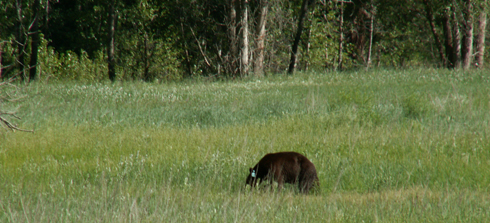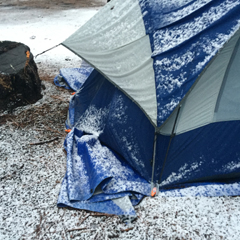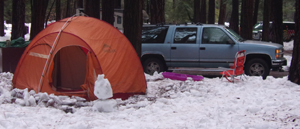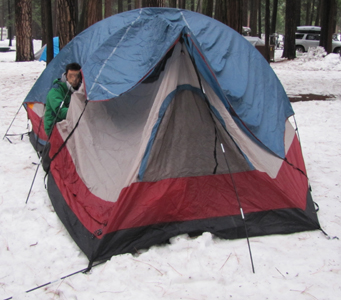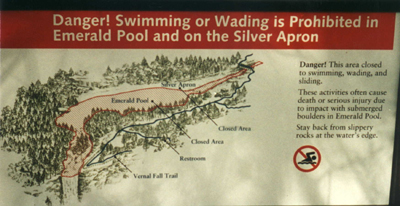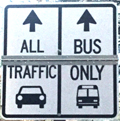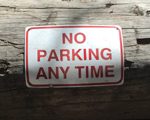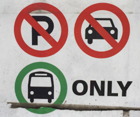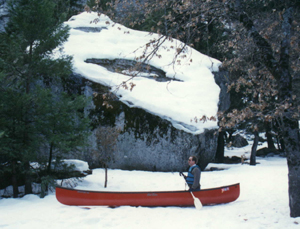
mostly from our winter Yosemite camping.
Well, some are mistakes, some are just plain irresponsible.
It is compiled in the hope you won’t do any of the following and you can skip getting the nickname
“the mooch,” “the princess,”
“the flake,” “that guy with the tent that collapsed,”
“the jerk who wouldn’t latch the bearproof-if-you-use-it-properly food storage box,”
“the fool with the shoes that wetly squish with each step,”
or “that slob who would never take trash to the dumpster.”
For some advice on the better, happier way to do things go to Have more fun camping and follow one or more of the dozen links.
Left their sense of humor at home.
Borrowed a tent, didn’t try pitching it before the trip, and found out on the trip that it was missing crucial parts.
Borrowed a tent, didn’t try pitching it before the trip, unpacked it at the campsite and all they found in the bag was a rainfly.
On the 1996 winter trip, a guy brought a giant box-shaped fabric and plastic sheeting contraption to sleep in. People riding with him and who were going to share sleeping accommodations, thought he said he was bringing a ‘tent.’ They were lucky and found space in other real dome-shaped, winter-rated tents as soon as they saw his alleged tent. He slept alone in his until the weather hit, then squeezed into another tent.
Arrived in good weather, pitched their tent badly, and left the rain fly poles sitting on the ground outside. When it rained and the tent leaked and their sleeping bags got soaked, moved to hotel rooms.
Didn’t arrange to borrow or rent a tent,
didn’t arrange to share space in a tent,
just showed up and expected there would be space.
He had spilled a can of soda in his tent and did not quite clean it up completely. He stuffed the tent into the bag and when he got home, did not take it out and wash it. The next time he wanted to use it, the fabric tore when he pulled it out of the bag because the tent fabric was stuck / glued together from the dried cola. The tent was not repairable. Moral of this story? Don’t eat anything in your tent.
On the 1994 winter trip, people were in the campsite, watching a coyote in a vacant campground across the river. One girl turned to the faculty advisor and whispered “is he allowed to come over here?”
(She was serious.)
Brought only a simple cotton-stuffed sleeping bag with no extra blankets on a winter trip – thought they’d be warm sleeping in their jacket – got warm by shivering.
Brought no sleeping bag at all on a Sierra Nevada 8,000′ elevation August camping trip with nice warm weather during the day and temps in the 40s at night.
Complained that “It’s summer, it’s supposed to be hot.”
On the 1995 winter trip, two guys showed up at the campground, went to the faculty advisor and said “we need sleeping pads.” They knew the club had some for that trip to borrow but had not arranged in advance for them.
Brought no insulating sleeping pads on the Yosemite winter trip, despite being repeatedly told that the club recommends two per person, even if you have an air mattress. Convinced his tent mate to loan him one of his when he found it impossible to get to sleep with only a sleeping bag between him and the very cold ground.
It seemed like a good idea Friday afternoon when moving into the campground to anchor tent guylines to branches buried in the snow until two mornings later after steady rain Friday night and a Saturday night low of 21 degrees. Sunday morning they were frozen solidly in place and initially trying to dig them out was quite frustrating. (Untying the lines did work.)
Didn’t make arrangements for a ride, just showed up when carpools met to leave
and figured there would be room
(oh, and he had a bike he wanted to bring and a bunch of food that needed refrigeration, and he figured someone would have room for it in their ice chest).
– – – You might guess he did not get a ride to go on the trip.
Didn’t bring money to pay for their share of gas, park entrance fees, etc. wrote an IOU, and refused to pay later when the driver lost the IOU.
Got into a carpool. Didn’t bring money to pay for their share of gas, park entrance fees, etc., and refused to pay their share, saying that the club ought to pay all the expenses on an over-a-weekend trip we were charging less than ten dollars for.
A carpool was running very late. After dark, riders all supposedly agreed to get “fast” food at a quick stop for gas, but two ordered pizza and held up the group.
On the 2006 Tuolumne trip, two girls didn’t bring the map they were given showing how to find the group campsite. They arrived at the campground at 5 p.m., with plenty of daylight, but gave up looking for the club campsite. Instead of asking a Ranger or the campground host for help and/or paying for their own campsite, they pulled their truck into an unoccupied site, pitched their tent and moved in. At 10 p.m. the pre-paid, registered occupants arrived and the two girls (well, women, they were in their 40s) convinced them to let them stay. (The registered campers reported the the two women to the park rangers in the morning.)
♥ Well, he had excuses for being tired. The night before a couple of nearby campsites had ignored the quiet hours. It had been a long hike. Late that afternoon he found himself standing in front of his tent, pointing his car door remote at it and clicking away, starting to get a little irritated that the tent door wasn’t unzipping and opening up.
A good way to wake up the whole campground is to set your car alarm.
Then if a curious animal or clumsy person bumps the vehicle at night you’ve succeeded.
On the 2002 winter trip a girl woke up everybody in the vicinity when she wanted to get into her car at 2 a.m. She used the keyless (remote) door opener and the RAV4 made the usual loud beep. She didn’t think to just use the key to open the door and she didn’t know that if you look in the owner’s manual you can find a way to disable the beep for most cars.
(Disabling the beep or not using the remote is now required for our trips.)
Hardly brought any food, just mooched off other people.
Didn’t bring a pan. Borrowed one, cooked breakfast, then rushed off to catch the skier’s bus, leaving the pan owner to clean it.
Brought only one change of clothes and got both sets wet and had to borrow from people.
Borrowed long johns (base layer) while on the trip and didn’t return them.
Before we started requiring to see people’s waterproof (not water-repellent) rain pants and hooded rain jackets in advance of the Yosemite winter trip, at least two people per winter trip needed temporary rain gear made for them from plastic garbage bags.
(Now you must show us your waterproof rain gear before you can sign up for any overnight trip.)
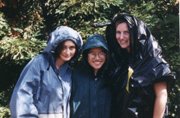
This next guy always complained that his wife packed too much stuff. He didn’t bring a change of pants. It snowed heavily (over a foot) during the evening and he stood near the campfire to stay warm. So the falling snow landed on his blue jeans (worn without rain pants) and melted in. At bedtime they found their tent had collapsed from the weight of snow so they decided to sleep in their car. He took off his wet pants. In the morning it took him quite awhile to get out of the warm sleeping bag and into the then frozen-stiff jeans. We’ve heard that he doesn’t complain so much any more that his wife packs too much gear.
This one a parent did in 1998. A dad really didn’t want his daughter to go winter camping. He tried to convince her, but she was determined. She had already paid for the trip and made arrangements to rent gear she needed. So he called the De Anza College Director of Student Activities and complained about the trip’s safety. The director got the Outdoor Club advisor on a conference call and the advisor defended the trip plans, answering every one of his concerns. The advisor thought that some of his ‘concerns’ were a bit over dramatic.
It turned out what he was trying to do was get the whole trip canceled as being unsafe
just to keep his daughter from going on the trip.
Said he didn’t need a map to get to Monterey because he knew the way perfectly, and wouldn’t listen to passengers when they repeatedly said he had missed the turnoff. They ended up 50+ miles in the wrong direction before he was willing to turn around – making the whole carload too late to participate in the kayaking event.
![]() Instead of reading the trip directions and getting questions answered, got directions off the Internet and took 13 hours to get to Yosemite (most people take 5-6). This carpool started out from De Anza in the evening, drove all night (not a real safe idea) and arrived early in the morning.
Instead of reading the trip directions and getting questions answered, got directions off the Internet and took 13 hours to get to Yosemite (most people take 5-6). This carpool started out from De Anza in the evening, drove all night (not a real safe idea) and arrived early in the morning.
Said she’d drive for sure, but didn’t tell her parents about the trip until the last minute. They said she couldn’t drive because she had no experience driving in the snow. Her passengers included a guy with experience putting chains on and driving in the snow, and the route she was planning to take has hardly any snow until the last of the drive, which is plowed and patrolled by Rangers, but her parents still wouldn’t let her go, so her passengers missed the trip.
Said he’d drive but didn’t plan ahead. Tried to get time off from work at the last minute and couldn’t, so people were unable to get a new ride and had to miss the trip.
Said he’d drive, and had convinced his parents to loan the big vehicle. Changed his mind about going on the trip, but didn’t tell people he was supposedly giving rides to until they called him the day before.
Told people when he signed up for the trip that he could borrow the family van and drive a bunch of people. Told people at the pretrip meeting a week before the trip that he would give them rides. Waited until two days before the trip to ask his parents if he could borrow the van and they said it wasn’t running well enough.
To have more space for gear, a woman borrowed her brother’s hard-sided Yakima cartop pod, but ooooops, he didn’t tighten it far enough when he installed it and it slid around on the drive. A trip member was able to figure out and correct the problem when she got to the campground, but it caused more than a bit of concern during the drive.
On the February 2003 trip the people (the club advisor and spouse) who stayed the night before the main group arrived had a raccoon climb up on the picnic table while they were eating dinner. They had been smart and locked their bear-proof campsite food storage locker before they sat down to eat. They said “HI” to the raccoon (did not feed it) and chased it off. A minute later they heard people yelling at the next occupied campsite “hey, get out of there!” and heard the food locker door clang shut. Less than another minute later (really) the same “get out of there” at the next occupied campsite down the loop was followed by yet another bear-proof locker door clanging shut. Yup, then the same at the next campsite. We’re guessing that some campers learned the hard way to shut their bear-proof locker door immediately after getting things out, especially after dark.
On the same trip people were warned about this aggressive raccoon behavior as they arrived. They had also been warned in advance. As we took off for an all day hike someone noticed that one guy had left food out on a picnic table and made him put it away. He still didn’t get the point because that evening he left snacks and candy in a pack and left it in a tent. A raccoon tore open the door at the zipper, damaging the tent, and made an orange mess all over people’s gear and sleeping bags as it ate the
Cheetos.
Four people tried to share one small water bottle on a long hike, because it’s winter and they didn’t think they’d get thirsty because it’s cold out, not hot and were very miserable and thirsty.
Didn’t bring enough water on a long winter hike, thinking they could use a water-purifying pump to refill the bottles, found only solidly frozen water or dried up springs and were very miserable and thirsty.
Left food outside of their tent overnight on purpose so they might get a picture of a bear. This was a parent! on a trip with the now nonexistent single parents club, with all ages of children sleeping in the campsites. (The food was found and removed by another trip member in time to prevent trouble.)
On the 2008 Tuolumne trip when one girl was asked if she wanted to get up in the middle of the night to watch meteor showers she said no because she did not want to get wet. (Nope, it was not rainy that weekend.)
As they got set to go on a night hike, were reminded by people in the next site that they should put their bag of trash in the dumpster or bearproof box before they left, but they didn’t do it. A coyote got into it even though there were people in the surrounding sites. The people (including one who worked at a local, famous recreation equipment store and acted as though he knew everything about camping, so-much-more-than-other-people on the trip) were banned from future club events.
On a trip with multiple campsites in a row, one couple left a blazing fire going in their site when they went to the store. This is against the law and can mean a big fine, so people from another site put out the campfire. When the couple returned from the store they got angry that the fire had been put out.
Thought a really big campfire would keep bears out of the campsite at night and so he was a little careless about putting away dirty dishes. Shortly after he finally was convinced to at least put the dirty dishes into the metal locker, a bear jogged through the center of the site, between the locker and the campfire and right past the front of a tent. He said he “screamed like a girl” (even though he said he wasn’t going to do that if he saw a bear) and hopped behind the picnic table.

The Yosemite National Park rangers would like you to call them
if you see a bear in Yosemite,
no matter where it is or what it is doing.
Since 2003 there has been a note in the Yosemite Guide: “REPORT ALL BEAR SIGHTINGS! To report bear sightings, improper food storage, trash problems, and other bear-related problems, leave a message for the Bear Management team at: 1 (209) 372-0322. Your call can be made anonymously.”
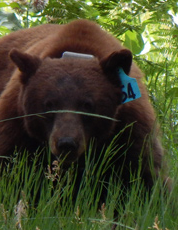
If you can, in all the excitement, try to notice if the bear has a tag (usually on the ear), the color of the tag and if possible, the number on it (the tag is large enough that with a telephoto lens you should be able to read the number).
The NPS notes: “Tagged, or radio collared, bears do not mean the bear is a “bad” bear. Tagging bears is done for better monitoring, and the ear tag color is completely random, used to help quickly identify a bear.”



“It is extremely important to remember to yell at bears that are in and around development, even if they are foraging on natural food. Though it is very tempting to get close for a picture, or just to watch these incredible animals, it is important not to give into this urge. Yelling at them if they are in residential areas or near people is critical to keep bears natural fear of humans. Giving bears plenty of space. When bears become too comfortable around people, they will often start causing damage to structures and vehicles, or will even become too bold around people, creating safety concerns.”
Wore plastic bags inside their boots because their boots weren’t waterproof after all.
Girls hung out in the heated restroom on a winter trip to stay warm, and invited a guy into the (women’s!) restroom to talk.
A couple of girls held up the start of a major all day hike because they needed to do their makeup.
The same girls wore watermelon scented lotion in a mosquito area.
On many Yosemite winter trips you might find a few De Anza people hanging out in the laundromat because they didn’t bring quite the right clothes or they need to dry some damp things (while playing cards). One year a woman spent a sizable sum putting coins in the machines and lying on them to get warm. Solutions are at: Snow or rain camp must-haves
On the 1996 winter trip, a guy failed to mention in advance to the carpool he got a ride with that he needed to leave for home early Sunday so he could get to work. Sunday morning he told his driver he needed to leave very early, and he was about to lose his job for not being there. (We had just had a beautiful snowfall and the driver and other passengers wanted to stay and photograph and play.)
![]() On a 2000 Tahoe trip a girl thought a bottle of tea doesn’t really count as food that would attract bears so you can have it in your tent, or leave it sitting just outside the tent at night. She was repeatedly told she was wrong but didn’t believe people. She left crackers and other snacks sitting out after eating, and wasn’t convinced when she was told by many people that her toiletries should be in the bear-proof-if-you-use-it-properly food locker. People were quite tired of her and were being a bit unfriendly by the end of the trip.
On a 2000 Tahoe trip a girl thought a bottle of tea doesn’t really count as food that would attract bears so you can have it in your tent, or leave it sitting just outside the tent at night. She was repeatedly told she was wrong but didn’t believe people. She left crackers and other snacks sitting out after eating, and wasn’t convinced when she was told by many people that her toiletries should be in the bear-proof-if-you-use-it-properly food locker. People were quite tired of her and were being a bit unfriendly by the end of the trip.
One former club officer still screams when he sees Ritz crackers.
As she woke up the Sunday morning of the 2003 winter trip, one girl’s first thought was
“Oh, no, I was sitting on my ice chest by the campfire!
I wonder if anyone put it away?” (Someone did, but not before a raccoon tried to get into it.)
After raccoons got into the tent in the middle of the night to try to get into his daypack,
blamed his mom for packing a peanut butter and jelly sandwich and his toothpaste in the pack.
Early Saturday morning on the 2013 winter Yosemite trip we found a torn open pack sitting just outside the entrance to one of the two-person tents. A raccoon had opened the tent and dragged it out, not even waking the people inside. In the second photo, the camper, not knowing how his pack got there, was concerned that perhaps his camera had been stolen, but that was not what the raccoon wanted. In the foreground of the third picture you can see the yellow chocolate bar wrapper (he and the raccoon share a liking for Toblerone bars). Yes, everyone had been asked more-than-once to triple check their day packs, pockets, etc., before putting gear in their tents.
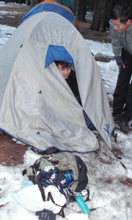
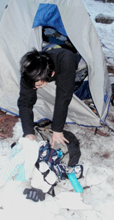
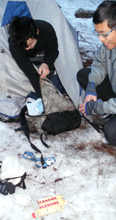
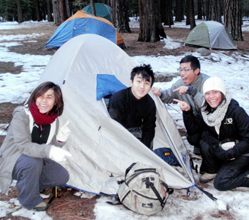
On the 2010 winter trip a guy put one of those suitcase mini-locks on the zipper pulls of his tent, thinking that it would keep a raccoon out. The raccoon just tore the tent fabric instead.
On the ’98 Yosemite winter trip one guy brought a package of bacon to cook. When he was asked what he was going to do with the grease, he said he would dig a hole in the ground and scrape the grease into it. This is against the rules anyplace you camp, including backpacking someplace remote. It’s possibly dangerous to attract animals to the smell and have them digging. It’s rude to the future people who camp there. Can you imagine not knowing someone buried bacon grease in a campsite, and pitching your tent over it, or near it, and having animals harass you all night?
Our advice: do a lot of the cooking in advance at home where it is easier to clean up.
On the 2003 winter hike to the base of/or the top of upper Yosemite Fall we met a family who looked a little cold. They had decided they were too warm hiking in their winter jackets and that the jackets were too much trouble to carry. They had stashed them in the bushes somewhere below. The clouds, which gave us snow, hail and/or rain, depending on which elevation hikers were at, were moving in quite quickly. I wonder if they made it back to their gear in time?
On a Tahoe trip, locked themselves out of their car and didn’t have a spare key. The whole group waited an hour at least for AAA to unlock the car before we could go kayaking that day. In the meanwhile we searched the whole group campsite area carefully, square foot by square foot, in case we could have spotted the keys on the ground. (We did get a lot of litter picked up.)
Brought a flashlight (electric torch) that requires being squeezed to work and hardly gives out any light each time you squeeze it.
Can you pass the “Winnebago test”? It’s a test discovered by a friend of the Outdoor Club faculty advisor. If you are stuck on a winding mountain road behind a huge, slow moving motorhome and you realize they are not going to pull over and let the dozen cars behind them pass, will you wreck your vacation? You will arrive late. You can arrive late and be in a ferociously horrible temperament or you can arrive late and be in a good mood. Either way it’s up to you, not up to the driver of the slow moving vehicle.
Before one winter Yosemite trip a guy told people that he would take anyone to the top of Half Dome. The Outdoor Club has gone there as a day hike or an overnight backpack, but only in the summer when the cables are up. Even with clear trails in summer the 17 mile round trip is considered extremely strenuous and listed as a 10 to 12 (or more) hour round trip. The Yosemite Guide newspaper and other sources list the cable route as inaccessible in the winter, but the guy would not listen to the faculty advisor when I told him that he should not be promoting such an idea. He insisted that he was experienced and could pull it off. So your faculty advisor called the Wilderness Center to get some help. I asked why they don’t list the trail as closed. They said the attempt would be incredibly dangerous,and I should tell everyone that they absolutely recommend it is not tried. When I asked why they don’t have a regulation against it, they said “we can’t outlaw everything that is stupid,” and gave the example of people trying to cross a flooding river. Experienced backcountry travelers know that just because a trail crosses water at a certain point doesn’t mean that is the best place to cross all the time, or even that the river or creek can be crossed all the time. But some people still try it anyway. The spokeswoman at the Wilderness Center I talked to added that she would like it if I gave her number to anyone who was still convinced to try a winter Half Dome hike because she said she would rather try to talk to someone than have to go out on a (winter) nighttime rescue.
One summer a group going to the top of Half Dome and back in one day took much longer than they expected. Then they found that the two flashlights they had among eight people ran out of batteries. They had warm clothes and lots of extra water and snacks, so they decided to wait on the trail for the moon to rise at 1 a.m. Around 11 p.m. another group of about a dozen people with one working flashlight also coming down from Half Dome caught up to where they were and they all hiked out together. If they each had their own
FLASHLIGHT!
well, they wouldn’t have this story to tell!
Below is a photo of one of the biggest mistakes you can make camping. Yes, this tent is a dome shape, better than a square box-shaped tent. But the “rainfly,” (the tan cap on the top), is a joke. It won’t keep the interior dry because any rain that falls will run down the cap, onto the main part of the tent and soak in. You need to spend the extra money to get a tent with a full rainfly that goes all the way down. Luckily for this guy (and his girlfriend) it didn’t snow (or rain/snow) during the club winter trip he brought this tent on.

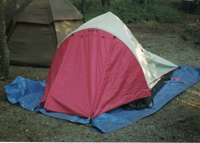
Would you pitch your 8 foot diameter tent in an 8 foot diameter puddle?
That is, in effect, what these campers did:
Below is a tent you shouldn’t take camping even in the summer. The roof sags enough to collect a big puddle (even in light rain) that will soak through. Snow would make this tent collapse.
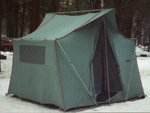
Before rain soaked through this tent we found room in a better tent for him.
He was lucky there was room.
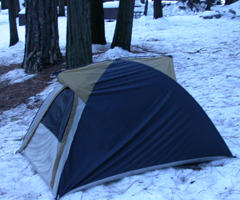
Pitch your tent by yourself when you arrive after dark and in the morning you might discover you put the rain fly and pole on upside down:
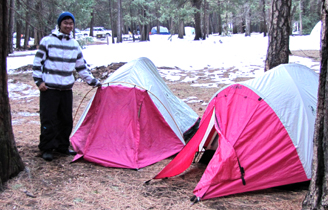
OOOOPs, he discovered that he had not dried out his tent completely the last time he used it, so it had mold. He and friend slept somewhat comfortably in the Chevy Suburban instead:
On the 2017 winter Yosemite valley trip these people pitched their tent incorrectly.
(Many tents have instructions printed on the bag, did they read them?
If they borrowed it from someone did they ask for instruction on how to pitch it?
Did they try pitching it before the trip?)
When they were having difficulty with it they did not ask other more experienced campers they were traveling with for help. In the dark, from a distance, it looked to the other campers as if they were okay.
They were found trying to sleep in their car in the morning and complained that their tent was “unstable,” as if to say it was a fault of the construction/design of the tent, rather than their failure to properly put the ends of the rain fly tent poles into the ring pins at the base of the tent.
As far as the rest of the group could tell, it looked as though they had just stuck the ends of the rain fly tent poles in the snow.
No good tent should have the ends of the rain fly poles in the ground or in the snow. All good tents will have tabs at the corners with grommets, or pockets or ring pins for the ends of poles to go in to, as in this example:
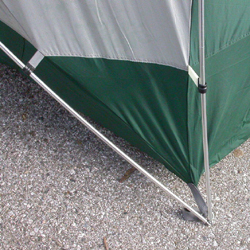
from this page: How to pitch the Cabella eight person tent.
More tent mistake pictures are at: Don’t buy a cheap tent
On the 2020 winter Yosemite trip, with nighttime temperatures in the 30s, the fully prepared Outdoor Club trip members who hiked the trail to the top of Upper Yosemite Falls met up with other students from the college that they recognized, who had been saying they would sign up for the trip, but did not sign up.
“On the way back down we discovered a group of three hikers who ‘happened’ to be students of De Anza. We quickly noticed that they were extremely under prepared. They were wearing very thin clothing. Skinny jeans. Vans shoes. They only had one headlamp and a flashlight that honestly couldn’t shine a light in front of their faces. They did not have any food nor did they have enough water. My group offered many necessities to help ensure their safety. We offered jackets, waterproof pants, water, food and flashlights (they refused the flashlights).”
Yosemite National park describes the hike:
Distance: 7.2 miles (11.6 km) round trip
Elevation: 2,700 ft (823 m) elevation gain
Difficulty: Strenuous
Time: 6-8 hours round trip
The unprepared people said they wanted to be at the top for the sunset – yes, in the winter with no food – no waterproof outerwear and a 3-4 hour hike back down, likely longer since there was some snow on the trail.
(At one point, the woman among the three unprepared hikers, who had on a t-shirt and jeans with no warm jacket and who carried no water, (but did accept a jacket from one of the prepared women) was crying.)
The Club trip members continued down and realized that since it was getting dark soon (and a cold wind came up shortly after sunset that evening), they “decided to turn around and go to these three to make sure they got down safety. We decided that we could not make our way down . . . knowing they were up there in an unprepared manner.” They saw them coming down and waited for them, then escorted them down, by flashlight.
None of the three had waterproof outer layers (which are required for trip members to show to the club before they can sign up for the trip). The waterproof outer layers are a necessity because wet weather can show up unexpectedly in the mountains and because even if the weather turns out to be dry, a waterproof outer layer can be extra protection just to keep people warmer, protected from wind. They said ‘we read the must-have equipment webpage but didn’t want to spend all the money so we came to Yosemite without the club.’
The prepared club trip members, (who accompanied the unprepared people all the way down the trail by flashlight after dark) likely saved the others’ lives.
The unprepared people made a choice not to spend money on necessities to be safe (or even just to survive) on the trail, but to instead spend money to stay in a more luxurious overnight accommodation than the people who saved them. The unprepared people had heated hotel rooms with Wi-Fi, bathrooms, big screen T.V., mini-fridge, patio or balcony. The students who choose to spend money to be properly prepared had a barely heated canvas tent cabin / thin wood walled cabin without their own bathrooms (shared restrooms / shower house a short walk away from the low cost overnight accommodations).
The students who saved the others
did not have to spend much money to be prepared.
See Snow or Rain Camp Must Haves for many ideas for people on a budget.
No one on our trips has admitted making the mistake of heading for a campground designed for RVs with the few tent only sites mostly at the end of rows of RVs, giving them bare dirt/roads sometimes completely around them with dust from vehicles all day and barely enough room to pitch a small tent:
Camping blunders from other sources:
Thomas Sperry writes of tent races as people chase their tents that they didn’t stake down before pitching. “Imagine the sight of … brightly-colored dome tents bounding away across the desert, owners vainly pursuing their evening quarters.”
He advised a friend “an experienced camper yet…to put stakes in first, but his response was that he wanted to see where the door was before he put stakes in. Mind you, we were camping in the middle of the Mojave Desert (where the only thing you can reliably say about the wind is, “It will be back!”). 25 mph winds with gusts to 35.
“Well, in the wilderness, you get your entertainment where you find it. I turned my chair from the campfire and watched. He and his friend struggled for 10 minutes after he got the shock poles in. Then they opened the front door. Then they turned the front door toward the wind. Get the picture? I think the tent ended up somewhere near Baker (we were 35 miles north of Mojave).”
From Girl Scout camp, when I was a camp counselor (group leader),
the loudest screaming I have heard while camping.
Picture six girls late at night in their tent trying to ‘channel’ someone on a Ouija board.
They are all concentrating and very quiet.
Next picture two feral cats or possibly raccoons, suddenly snarling and fighting just outside that tent.
Picture how fast the camp counselors can run in that direction.
Yosemite has gotten cell phones calls from hikers who are tired and want a lift out. According to a newspaper article … They get a polite refusal. “Just because you’re tired doesn’t mean we’re going to send someone out,” said a park spokesperson. Read the whole article at:
From the San Francisco Chronicle – June 6, 2004
“…story of the tourists from Europe…
This was in Wawona in south Yosemite, where the four tourists charged into the ranger station, shouting in hysterics that their “rental car had been bombed by terrorists.” The proof, they said, was the “powder residue from the explosive” all over the back seat.
Rangers examined the crime scene and discovered that the “powder residue” was actually pancake mix — along with a (bear) paw print in the middle of the back seat.”
Info about food storage from bears, how bears get into cars, what to do if you see a bear and more is at: Bears
from the National Park Service Morning Report of Thursday, November 10, 2005
Joshua Tree National Park (CA)
PVC Potato Cannons Seized from Scout Troop
On the morning of Saturday, October 29th, park employees received reports of a disturbance from visitors who were camping in the group campsites at Indian Cove Campground. Protection rangers responded. During the subsequent investigation, the rangers confiscated seven cannons constructed from PVC piping which were being used to shoot potatoes into the area of the campground through the use of a gas propellant. The cannons ranged in size from two to six feet in length and are defined as destructive devices under the California penal code. Other miscellaneous PVC piping, which was used for making the potato cannons, and three five-pound bags of potatoes were also confiscated. A local California Boy Scout troop occupied the site. The site permit holder was issued a violation notice for possession/use of weapons. The Scoutmaster and group leaders were given multiple verbal warnings for disorderly conduct, sanitation/refuse violations, food storage violations, and miscellaneous traffic offenses. [Submitted by Judy Bartzatt, Chief Ranger]
Grand Tetons t-shirt:
Feed the bears.
Squat with your spurs on.
Let your kids ride the elk.
Picnic in poison ivy.
Drive fast and pass on curves.
We thank you for your support,
Jackson Hole Paramedics.
Walking in the wild
By Diana Marcum
The Fresno Bee
Published 07/27/03 04:55:12
YOSEMITE NATIONAL PARK — On the first day of his vacation, Doug Sells, an athlete at the University of Oregon, hiked the Yosemite Falls Trail. When he got to the top — huffing and puffing in 95-degree mugginess, slipping on the fine sand that covers the steep granite trail — he saw him. A man in black jeans, black T-shirt, flip-flops and carrying no water or backpack.
The next day on the strenuous 7-mile round-trip Nevada Fall Trail, Sells passed a man in dress pants and dress shoes.
But it was what he saw on his hike to Half Dome on Wednesday that stopped him short. Just before the final ascent — so steep it involves pulling one’s self along on cables — thunder and lightning started hitting the peak. A crowd of about 30 hikers turned back, each person’s hair standing up with electricity.
“It was like a cattle drive, everyone hurrying down,” Sells said.
“Then here comes this guy going up. He had on flip-flops and rolled-up jean shorts. He was smoking a cigarette, and he had a very good beer gut.”
Every year, Yosemite’s marvels beckon those in flip-flops and mules; those who eschew packing water for carrying a liter of cola — or a six-pack of beer; those who see a towering mountain from a car window and think “Why not?”
They could be viewed as Huckleberry Finns in ill-suited footwear, traipsing through a Gore-Tex world; testament that, as rangers like to say, “the park belongs to everyone.” Locals more commonly refer to them as tourons — tourists displaying moronic behavior. Rangers call them PSRs, possible search and rescues.
Logs rangers keep contain hundreds of cases of hikers who’ve fallen off trails, suffered dehydration or leg cramps, injured their heads or had heart attacks. Many are air-lifted by helicopter to area hospitals.
While most discussions surrounding Yosemite are about keeping one of the nation’s most-used parks both ‘wild’ and accessible, the largest safety issue is making people without outdoor experience aware that it isn’t an amusement park,
rangers say.
“One of the things that is so great about Yosemite is that it’s easily accessible, just a few hours from L.A. and San Francisco. But because of that we get a lot of people who come to see the steep cliffs, the waterfalls, and the swift water and are still under the false perception that this isn’t wilderness,” said Deb Schweizer, a park spokeswoman, who verified that yes, Yosemite rangers are regularly asked what time the park puts out the deer in the morning and whether they could turn down the volume on the falls.
“For some people, this place is just so outside their reality,” she said.
“The words we hear more than any others when we rescue people on the Yosemite Falls Trail [with an elevation gain of 2,700 feet — the equivalent of a 270-story building] is “Oh, I didn’t know it would be so steep.”
Last year, Yosemite’s Search and Rescue Team responded to 180 incidents, 100 of them involving day hikers, most of whom came from the Central Valley and the Bay Area. In 2001, the rescue team responded to 167 incidents — with more than 100 of those, too, involving day hikers.
“We call the day hiker stats our ‘Joe-out-in-the-woods-for-the-day’ numbers,” one ranger admitted. “They trip. They fall off rocks. They get dehydrated because they don’t carry water. They get lost because ‘map’ is a foreign concept. They forget that they have to get back down.
“But when you see the amount of people who go up a mountain with as much preparation as they’d take to go into their back yard, you figure the amazing thing is that most of them make it.”
On Thursday, Mina Baik, 26, moved swiftly up Mist Trail, which climbs beside Vernal Fall and is the beginning of a Half Dome route. Wearing 3-inch Steve Madden platform slides, she passed throngs of the dutifully booted.
Several hikers on their way down told her she might not want to go farther in those shoes. Up ahead, they warned, were steep steps sprayed slick with waterfall mist.
Baik wasn’t worried. She’d been hiking before: once.
Last year in Maui she followed the Seven Sacred Pools Trail while wearing what she deemed strappier, more fashion-conscious sandals than her Yosemite footwear.
It’s not that Baik doesn’t own hiking boots. She has a “really cute pair, with stars” and four pairs of athletic shoes. She just didn’t think to pack them when her parents decided the family would take a spur-of-the-moment trip from Reno.
“I was thinking, well, you know, waterfalls. We’d park the car and go look over,” she said. “It’s a lot different than I thought it would be.”
Baik made it up the steps, then she sure-footedly made it down.
No problem, she said: “These are my comfy shoes.”
Notes from a Wilderness Medical Society study:
“Methods. – Yosemite Search and Rescue (YOSAR) personnel record every search and rescue mission on a Search and Rescue Incident Report. The information contained in these reports was used to perform a retrospective review of all SAR missions within YNP during the 10-year study period between January 1990 and December 1999.
Results. – YOSAR performed 1912 SAR missions, assisting 2327 individuals and recording 2077 injuries and illnesses. Popular trails in and around Yosemite Valley collectively accounted for 25% of all individuals needing SAR services. Lower extremity injuries and dehydration/hypovolemia/hunger were commonly identified reasons to need SAR services. The duration of SAR missions averaged 5 hours, used 12 SAR personnel, and cost $4400. Helicopter was the primary mode of transport in 28% of SAR incidents. There were 112 fatalities, yielding a SAR case fatality rate of 4.8%. The majority of fatalities occurred while hiking/snowshoeing, with falling the most common mechanism of lethal injury.
Conclusions. – Day-hikers in and around Yosemite Valley use a large portion of SAR services, with lower extremity injuries and dehydration/hypovolemia/hunger the most common reasons. It seems reasonable to direct future intervention to prevention of these commonly identified problems in this particular population of Park visitors.”
2021 Yosemite National Park SAR (Search and Rescue) DATA
Total Helicopter Evacs/Rescues/Short Hauls: 35
Total Searches: 42
Total Carry outs/Wheeled Litters: 52
Total Assists/Walk Outs: 43
Total Technical Rescues: 18
Total Confirmed Fatalities: 6
Month with Most SARs: June
Total Incidents: 190
These stats are courtesy of FOYOSAR (Friends of Yosemite Search and Rescue)
501(c)(3) nonprofit | Tax ID: 54-2081466
Friends of YOSAR
PO Box 661
Yosemite National Park, California 95389-0661
 You can’t always expect a helicopter rescue
You can’t always expect a helicopter rescue
The use of cell phones for photography (with or without a selfie stick) has made preventable injury or even death by selfie common They were just taking a selfie . . .
Road trip advice and etiquette has ideas for limiting boredom, getting along on a road trip and some packing and safety tips.
Cell phones in the wilderness which has advice on how/when to use a cell phone to contact 911 in the wilderness and a warning about interference between cell phones, iPods and avalanche beacons.
Depending on a GPS unit to intentionally be separated from your hiking partners can lead to confusion or even disaster. Be certain that the people you are with are happy with this prospect.
GPS is not infallible
Thunderstorm and lightning safety includes a warning about not using your cell phone or IPod during a storm.
At altitude you will probably feel out of breath at first and may even get a headache and lose appetite. You can get more sunburned. Your tent mate might seem to stop breathing.
From a NOLS (National Outdoor Leadership School) Wilderness case study: “cold, damp socks is not a sign of toughness, rather, it’s a bad habit.” Serious cold injuries to toes/feet can surprise “people who thought their feet were just a bit cold.” Required gear for De Anza College Outdoor Club camping trips, with lots of advice on gear selection.
climbing advice: Staying Alive – by NPS Ranger John Dill, which includes:
“No Yosemite climber has died from heat, but a half-dozen parties have come close.
Too exhausted to move, they survived only because death by drying-up is a relatively slow process, allowing rescuers time to get there.”
– – – – – – – – – – – – – – – – – – – – – – – – – – – – – – – – – – –
Drivers should note that there have been sections of road in Yosemite Valley part of the year with two lanes (usually) in the same direction, with the right lane ONLY for the free shuttle buses, ambulances, ski bus, commercial vehicles with ten or more passengers. The NPS says: “The bus lane ensures emergency vehicles can respond to incidents when traffic is backed up and provides preference for mass transit.”
Parking and traffic jams in Yosemite valley tips and tricks has the above advice, with maps of each of the three major day-use parking lots, with advice to help you NOT get a Yosemite National Park traffic or parking ticket, and not contribute to preventable traffic backups. And some details of where you can’t park in Yosemite, or can’t park without a permit.
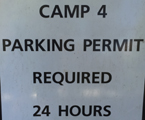
– – – – – – – – – – – – – – – – – – – – – – – – – – – – – – – – – – –
See also an index to over a dozen Yosemite National Park webpages with park laws, rules, regulations and policies.
backpacking advice has these sections:
Must bring for each large group (or perhaps for each couple or person),
Must bring backpacking for each person,
Some (crazy?) people think these are optional for backpacking, Backpacking luxuries(?),
Do not bring these backpacking,
To keep down on weight backpacking,
Don’t rush out and buy,
BACKBACKING FOOD,
Low-cook backpacking foods,
Yosemite National Park WILDERNESS PERMITS,
Safe Distances from Wildlife includes reasons to stay away from even friendly seeming animals in parks, and charts and photos to better be able to determine and visualize how far away from wildlife you need to stay to be safe (and obey laws that do have penalties).

You could put links on your smart-enough phone to access various webpages more quickly during your trip:
“Plan and enrich your visit to a National Park with the official, free National Park Service app. Digitally explore a park—by map or by topic of interest. Discover the natural and cultural stories in context with their locations. Find the information you need about visitor centers, events, lodging, places to eat and shop, and services throughout the park.”
Yosemite App:
https://www.nps.gov/yose/planyourvisit/app.htm
Grand Teton app:
https://www.nps.gov/grte/planyourvisit/nps-grand-teton-app.htm
Yellowstone app:
https://www.nps.gov/yell/planyourvisit/app.htm
Lightning strikes in the last 24 hours are recorded at:
https://www.lightningmaps.org/blitzortung/america/index.php?lang=en
https://www.accuweather.com/en/us/national/severe-weather-maps
Weather map: “GeoColor is a multispectral product composed of True Color (using a simulated green component) during the daytime, and an Infrared product that uses bands 7 and 13 at night. During the day, the imagery looks approximately as it would appear when viewed with human eyes from space. At night, the blue colors represent liquid water clouds such as fog and stratus, while gray to white indicate higher ice clouds, and the city lights come from a static database that was derived from the VIIRS Day Night Band.”
https://www.star.nesdis.noaa.gov/GOES/sector_band.php?sat=G17§or=wus&band=GEOCOLOR&length=12
for fun: an eight person tent holds this many campers
see also signs 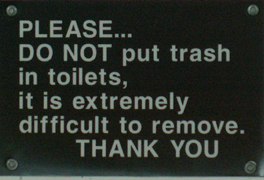
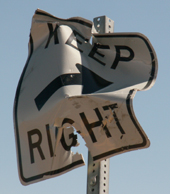
______________________________
(Links to all De Anza Outdoor Club Coming Attractions are here.)
______________________________
The author of this webpage, (written for my students), does not give any warranty, expressed or implied, nor assume any legal liability or responsibility for the accuracy, completeness, or usefulness of any information, product, or process included in this website or at websites linked to or from it. Users of information from this website assume all liability arising from such use.

